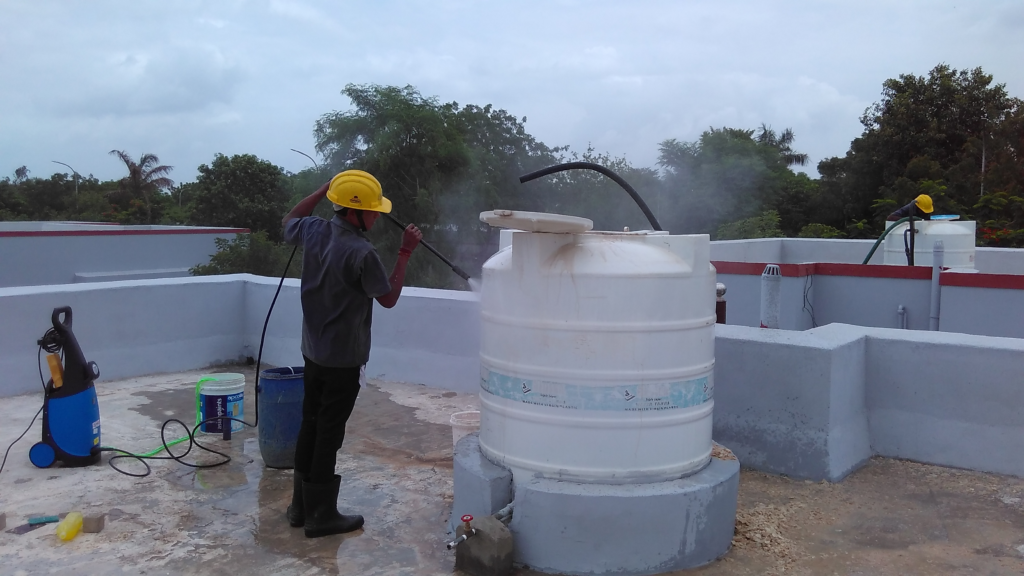
Water is essential for life, and storing it safely is crucial to ensure its purity and prevent contamination. Water storage tanks, commonly used in homes and industries, are prone to accumulating dirt, algae, and harmful microorganisms over time. Keeping these tanks clean and germ-free is essential to safeguard health and maintain water quality. Here are some practical steps and tips to achieve this.
Establishing a routine for cleaning your water storage tank is the first step to ensuring its hygiene. Tanks should ideally be cleaned every six months to prevent the buildup of contaminants. However, if you notice signs of algae, foul odors, or discoloration in the water, it’s a sign that cleaning is overdue.
Before cleaning, the tank must be completely emptied. Use the stored water for non-potable purposes, like gardening or cleaning, to avoid wastage. Once emptied, inspect the interior of the tank for dirt, algae, or debris that may have accumulated.
For a thorough cleaning, scrub the interior surfaces of the tank using a brush or sponge with long handles. This helps remove dirt, algae, and slime effectively. Use warm water mixed with a cleaning solution such as mild detergent or baking soda for better results. Avoid using harsh chemicals, as residues can contaminate the water later.
Disinfection is a critical step in eliminating harmful microorganisms. After cleaning, rinse the tank thoroughly to remove any soap or cleaning agents. Then, apply a disinfectant solution made from household bleach (chlorine) diluted with water. For safe use, add approximately 50 milliliters of bleach per 1,000 liters of water. Let the solution sit for a few hours, ensuring all surfaces are exposed, and then rinse the tank multiple times to remove any traces of bleach.
Algae thrive in sunlight and stagnant water. To prevent their growth, ensure that the tank is covered with a lid or shielded from direct sunlight. Transparent tanks are more susceptible to algae formation, so opt for opaque or dark-colored tanks if possible. Additionally, ensure proper ventilation to reduce humidity and avoid stagnant water conditions
Maintaining water quality goes hand-in-hand with tank cleanliness. Always use clean and potable water to refill the tank. Install a filtration system to prevent sediments and impurities from entering. Regularly monitor the water for signs of contamination, and test it periodically using water quality testing kits.
Preventing contamination starts with protecting the tank from external pollutants. Make sure the tank is sealed properly to prevent entry of dust, insects, or rodents. The inlet and outlet pipes should be equipped with mesh or filters to stop debris and contaminants. Additionally, place the tank on an elevated surface to minimize contact with soil or groundwater.
If the tank is large or difficult to clean manually, consider hiring professional cleaning services. These experts use advanced techniques such as high-pressure washing and specialized disinfectants to ensure thorough cleaning and germ removal.
Regular maintenance is vital for keeping your water storage tank in optimal condition. Periodically inspect the tank for cracks, leaks, or rust, which can compromise its hygiene. Replace any damaged parts promptly to prevent contamination. Keep an eye on water quality and act immediately if you notice any abnormalities.
Clean and germ-free water storage tanks are essential for health and safety. By adopting regular cleaning schedules, proper disinfecting methods, and preventive measures, you can maintain the quality and purity of stored water. With a little effort and attention to detail, you can ensure that your water tank remains a reliable and safe source of clean water for you and your family. Safe and sanitary water storage not only protects health but also contributes to a sustainable and hygienic lifestyle.